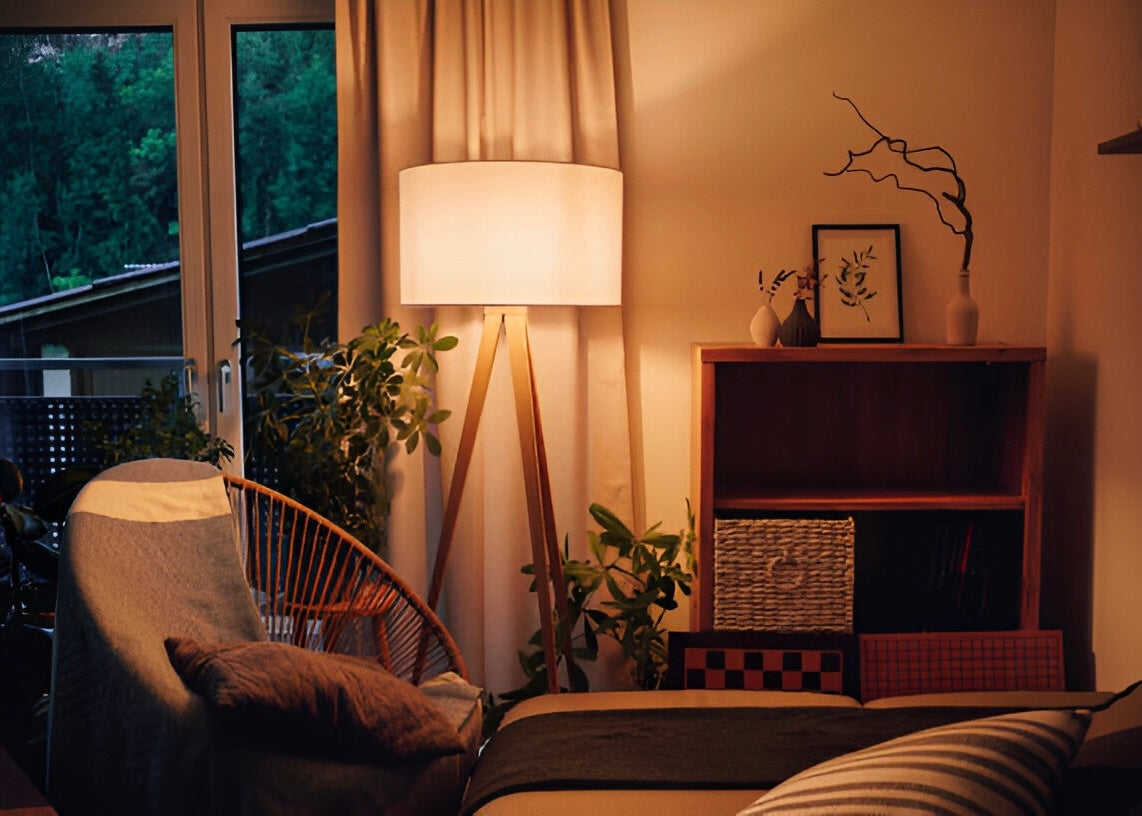


You know the challenge: although a compact living room often offers comfort, it can also quickly appear dark, cramped and smaller than it actually is. Lighting in particular is a major hurdle here. How do you create a lighting atmosphere that does not visually reduce the room, but on the contrary conveys a feeling of spaciousness, brightness and, above all, comfort? A task that requires strategic thinking.
The good news is: with sound lighting ideas for your small living room, significant improvements can be achieved. Light is far more than just a means of illumination; it is a powerful design element. It enables the creation of specific moods, the clear definition of living areas and also the visual enlargement of rooms. The single, central ceiling light, which often casts harsh shadows and creates a flat effect, is rarely the ideal solution. In this article, we take a deep dive into the topic of smart lighting concepts that can transform your small living room into a bright, airy and extremely cozy retreat.
I will introduce you to practical principles and concrete implementation suggestions on how you can fundamentally improve the feeling of a room through targeted lighting design. Prepare yourself for well-founded insights that will help you to put your small living room in the best possible light.
Before we go into the details of implementation, let's take a brief look at *why* light is so important in a small living room. The answer lies in its effects:
Effective lighting therefore goes beyond simply "brightening up"; it is an active part of interior design.
Let's look at how these layers are constructed and how they can be used effectively in a small living room:
This level ensures a general brightness for the basic orientation in the room and avoids dark, unused corners. In small rooms in particular, this base should be soft and uniform so as not to overwhelm.
Sound tip: Prioritize a soft, even distribution of light for ambient lighting. Indirect sources are often more effective than direct light to promote a feeling of openness.

This lighting level is used for targeted illumination of specific areas for activities such as reading, manual work or using a laptop. The focus here is on functionality, but space-saving solutions can also be found here.
Sound tip: Ensure sufficient brightness at your work or reading place, but avoid direct glare. Ideally, the light source should be positioned so that it does not shine at eye level.

This level is used to showcase selected objects or areas to give the room character and visual depth. This is particularly important to give structure to small rooms and avoid a monotonous effect.
Sound tip: Set accents deliberately and carefully. Concentrating on a few, carefully selected highlights is more effective than trying to illuminate too many elements, which can make the room look cluttered.

A tried and tested but often underestimated trick: position light sources so that their light is reflected by a mirror. This not only doubles the perceived brightness, but also creates an optical extension and additional depth through the reflection, which immediately makes a small room appear larger. A wall light next to a mirror or a table lamp in front of it are simple but effective examples.
By placing light sources at different heights and deliberately illuminating vertical elements (e.g. walls with wallwashing, tall plants with spotlights from below), you direct the viewer's gaze upwards. This emphasizes the height of the room and can significantly reduce the feeling of constriction that can arise with a small floor area.
Choosing the right color temperature of light is crucial for an inviting and cozy living room. Warm white light (typically in the range of 2700-3000 Kelvin) creates a cozy, relaxing atmosphere. Cold white light (over 4000 Kelvin), on the other hand, has a rather functional and cool effect and is often unsuitable for living rooms.
Voluminous or dark, opaque lampshades absorb a lot of light and can look bulky in small rooms. Instead, prefer shades made of light-colored, translucent materials such as thin fabric, glass or transparent plastics. These allow the light to diffuse better and appear lighter in the room.
To avoid tripping hazards and avoid cluttering the room unnecessarily, floor lamps should preferably be placed in the corners of the room or behind larger pieces of furniture such as sofas or armchairs. This allows you to make optimum use of the available space and the light fulfills its function without dominating the room.
Although a multi-layered lighting concept requires several light sources, this does not mean overcrowding the room with luminaires. The art lies in intelligent selection and strategic placement. Choose luminaires that fulfill several functions or can be integrated unobtrusively. Careful planning as to which luminaire fulfills which purpose is the key here.

Developing a suitable lighting concept may seem complex at first, but it can be implemented in a structured way:
Important note on installation: Ideally, you should plan the electrical connections (wall connections, sockets) to match your lighting concept. However, many solutions can also be implemented with cleverly laid cables and adapters.
Lighting a small living room is a design task that can be mastered brilliantly with the right knowledge. It is less about increasing the number of square meters and more about creating a feeling of openness, brightness and, above all, a high level of comfort through well thought-out lighting. The principles of light layers (ambient, task and accent lighting) presented here, the strategic use of indirect light and mirrors as well as the conscious choice of luminaire types and color temperature form the basis for a successful lighting concept.
Take the time to examine the various approaches and adapt them to suit your needs. Find the combination that best suits your individual style of living and your needs. You will see what a significant positive difference a well thought-out lighting concept can make. It will not only make your small living room appear brighter, but also noticeably more inviting, livelier and simply more liveable. It is your personal retreat, the quality of which is significantly enhanced by the right light.
I hope this article has given you valuable, well-founded insights and inspiration for lighting your small living room! Good luck with the implementation and enjoy your optimally illuminated home!
Internal sources:
External sources: